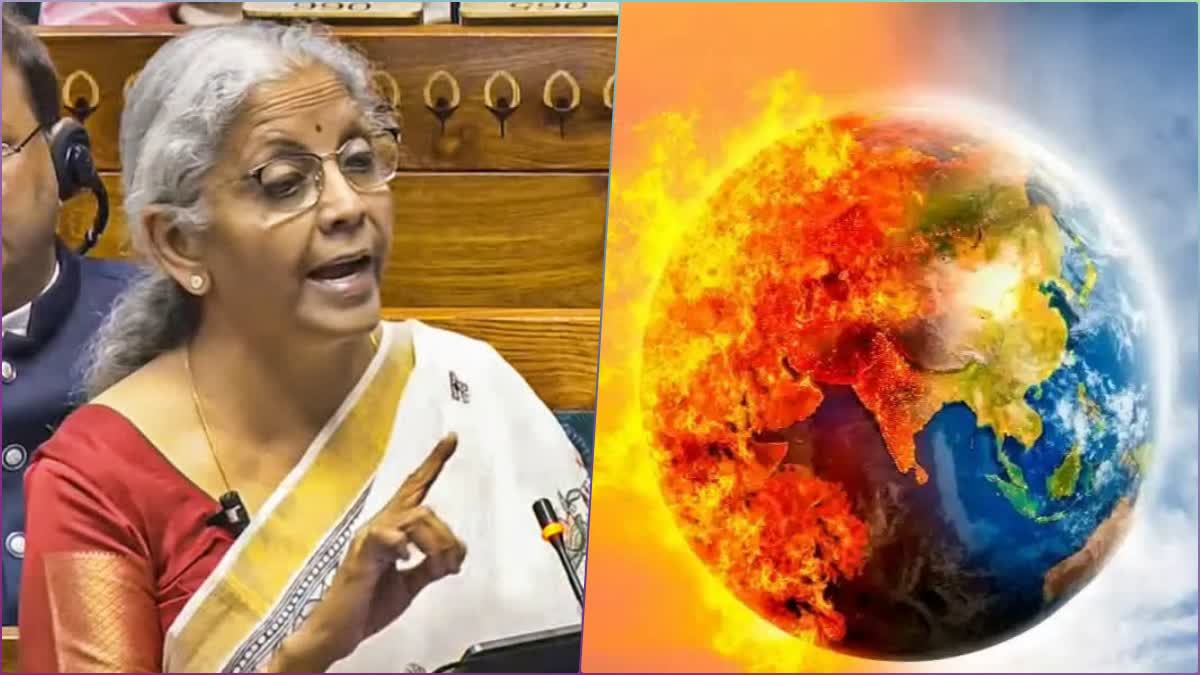The Union Budget 2025, positioned as a forward-looking fiscal blueprint, once again offers only a token acknowledgement of climate action. While the Ministry of Environment, Forest, and Climate Change (MoEFCC) received a modest 2.47% increase in its budget allocation, funding for critical sectors such as industrial decarbonization, climate adaptation, and ecosystem conservation remains inadequate. Although increased spending on solar energy and electric vehicles signals a push towards clean energy, the budget fails to take a holistic approach to India’s climate agenda.
India has set ambitious climate targets, aiming for net-zero emissions by 2070 and a 50% reduction in emissions intensity by 2030. Achieving these goals, while also striving for Viksit Bharat (Developed India), demands resilient and inclusive development strategies. If climate risks remain unmitigated, India faces the possibility of losing 24.7% of its GDP by 2070 due to rising climate-induced disruptions. With the United States pulling back from its Paris Agreement commitments, the world increasingly looks to India as a global climate leader. However, India's current fiscal stance on climate action falls short of expectations, underscoring the urgent need for policy interventions that can bridge the gap between ambition and action.
With minimal budgetary support for critical climate sectors, how can India meaningfully advance its climate action efforts? Looking ahead, what structural and strategic frameworks must be implemented to fulfil its climate pledges effectively?
First, India needs a meaningful shift in policymaking that requires redefining how growth is measured. One of the fundamental challenges India faces is the lack of integration between climate policies and economic strategies. The budget highlights an ongoing struggle between economic growth—driven by infrastructure expansion and industrial investments—and environmental sustainability. The government's announcements on climate action remain separate from those on economic development, perpetuating a false dichotomy between the two. A shift in perspective is necessary: climate action should not be viewed as an economic constraint but as a growth multiplier that can drive sustainable and equitable progress.
India must move beyond the conventional reliance on GDP as the primary indicator of economic progress. A more comprehensive framework that incorporates sustainability metrics—such as carbon intensity, resource efficiency, and climate resilience—would provide a clearer picture of long-term development. India must embed sustainability into its economic planning to ensure that growth does not come at the cost of environmental and social degradation.
Second, the budget’s focus on infrastructure development further highlights this disjointed approach. With ₹11.5 lakh crore allocated for capital expenditure, the government has reaffirmed its commitment to modernizing India’s infrastructure. However, this spending lacks a climate-resilient blueprint. Infrastructure projects initiated today will shape India’s development trajectory for decades to come, with many expected to last beyond 2050—a time when climate risks are projected to intensify. Without integrating climate resilience into infrastructure planning, these projects could entrench vulnerabilities rather than mitigate them.
India’s infrastructure expansion must account for the environmental and socio-economic risks posed by climate change. Large-scale projects often lead to displacement, loss of land, and livelihood challenges, particularly affecting marginalized communities. Yet, the budget does not outline strategies to mitigate these impacts. The absence of climate risk assessments in public investment planning remains a glaring oversight. As India builds its future cities, highways, and energy grids, mainstreaming sustainability into these projects is imperative. Policy frameworks must ensure that infrastructure is not only economically viable but also environmentally sound and socially inclusive.
